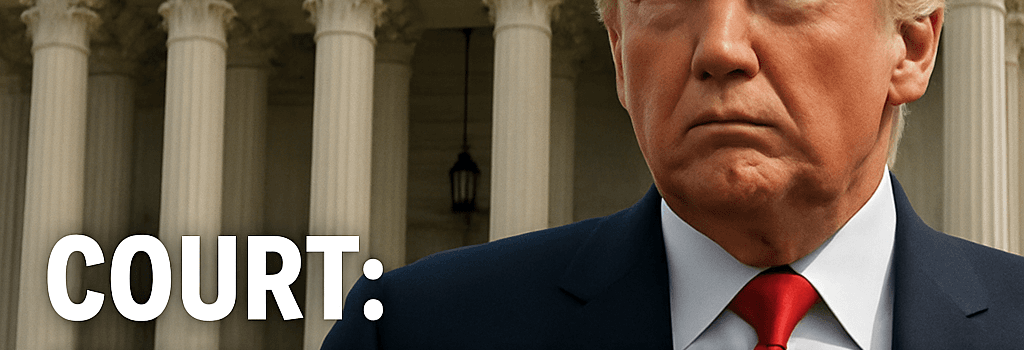Court: Trump Violated Law in FTC Commissioner Firing

Background and Summary of the Ruling
On July 17, 2025, US District Judge Loren AliKhan issued a memorandum opinion holding that former President Trump unlawfully removed Democratic FTC Commissioner Rebecca Kelly Slaughter in March 2025. Citing the 1935 Humphrey’s Executor v United States decision, the court granted Slaughter’s motion for summary judgment and declared her removal invalid. The ruling confirms that FTC commissioners enjoy for‐cause removal protections under 15 USC 41, and that any termination not based on inefficiency, neglect of duty, or malfeasance in office is void.
Because the law on the removal of FTC Commissioners is clear, and for the reasons explained below, the court will grant Ms Slaughter’s motion for summary judgment and deny Defendants’ cross-motion for summary judgment. – Judge Loren AliKhan
Judge AliKhan concurrently denied Commissioner Alvaro Bedoya’s claims as moot after his voluntary resignation. Trump has appealed to the DC Circuit and moved to stay the district court’s order pending appeal. Legal observers expect the case to ascend to the Supreme Court, where the administration seeks to overturn or limit Humphrey’s Executor.
Key Provisions and Technical Enforcement Powers of the FTC
The Federal Trade Commission, established in 1914, enforces antitrust statutes, oversees data privacy compliance, and issues regulations to prevent unfair or deceptive business practices. Its statutory powers include:
- Administrative adjudication of antitrust and consumer protection disputes
- Rulemaking authority for privacy and cybersecurity frameworks
- Investigations into algorithmic bias and platform competition
- Data breach enforcement under Section 5 of the FTC Act
These technical capabilities underscore why commissioners require independence from direct executive control. Without robust for-cause removal protections, the FTC’s rulemaking and enforcement could be subject to political interference, jeopardizing ongoing investigations into major technology firms and emerging AI platforms.
Historical and Comparative Perspective on Agency Independence
The 1935 Humphrey’s Executor decision arose when President Roosevelt attempted to remove FTC Commissioner William Humphrey. The Supreme Court unanimously held that Congress validly insulated FTC commissioners from at-will removal, preserving separation of powers and administrative independence. Key reaffirmations include:
- 1951 Securities Exchange Commission removal case denying at-will executive control
- 2010 and 2020 Supreme Court rulings upholding for-cause protections for the NLRB and Consumer Financial Protection Bureau
- Thirteen presidential administrations acquiescing to these protections over nine decades
Comparatively, independent bodies like the SEC, FEC, and NLRB share similar removal clauses, reflecting a consistent congressional judgment that certain regulatory functions require insulation from political swings.
Separation of Powers and Constitutional Considerations
Legal scholars argue the decision reinforces Article I’s vesting of legislative–executive checks. By permitting Congress to define removal standards, the Framers envisioned a tripartite system where independent commissions serve as buffers against unfettered executive power. Renowned constitutional law expert Professor Elena Kagan notes:
Independent agencies occupy a unique space in our constitutional order. For-cause removal guarantees are not a relic but a vital check on executive aggrandizement. – Professor Elena Kagan, Harvard Law School
Trump’s notices cited policy disagreements, not statutory causes, infringing on separation of powers. The district court’s declaratory judgment prohibits FTC leadership from impeding Slaughter’s functions, effectively reinstating her until lawful cause is proven.
Implications for Tech Regulation and Industry Enforcement
Commissioner Slaughter has played a key role in advancing data privacy rulemaking and algorithmic accountability frameworks. Her reinstatement preserves continuity in high-profile probes into major cloud providers, social media platforms, and AI systems. Ironclad removal protections ensure:
- Uninterrupted enforcement of data security standards
- Stability in ongoing antitrust investigations of dominant platforms
- Independence in crafting rules on automated decision making and AI transparency
Technology firms face evolving FTC scrutiny, from cloud infrastructure compliance to machine learning audit requirements. Any erosion of commissioner independence could chill robust oversight and undermine public trust in digital markets.
Expert Opinions and Technical Analysis
- Former FTC General Counsel Julie Brill emphasizes the technical complexity of privacy rulemaking, noting that “consistent, unpoliticized leadership is essential to address algorithmic bias and cross-border data flows.”
- Antitrust scholar Fiona Scott Morton warns that “political interference risks delaying merger reviews and enforcement actions against dominant cloud providers, harming competition and consumers.”
- Cybersecurity expert Bruce Schneier argues that “for-cause removal is critical to ensure the FTC can impose security best practices on IoT and edge computing devices without White House pushback.”
Next Steps and Potential Supreme Court Review
With the DC Circuit now weighing the appeal and a probable Supreme Court showdown, the future of independent agencies hangs in the balance. A reversal of Humphrey’s Executor could unsettle decades of regulatory stability across multiple sectors. Observers will watch whether the high court revisits the constitutionality of for-cause removal or reaffirms long-standing precedent.
Conclusion
Judge AliKhan’s decision underscores the enduring power of Humphrey’s Executor and the critical role of independent regulation in complex technical fields. As legal challenges proceed, the FTC’s ability to enforce antitrust, privacy, and cybersecurity mandates without political interference remains a cornerstone of US governance in the digital age.